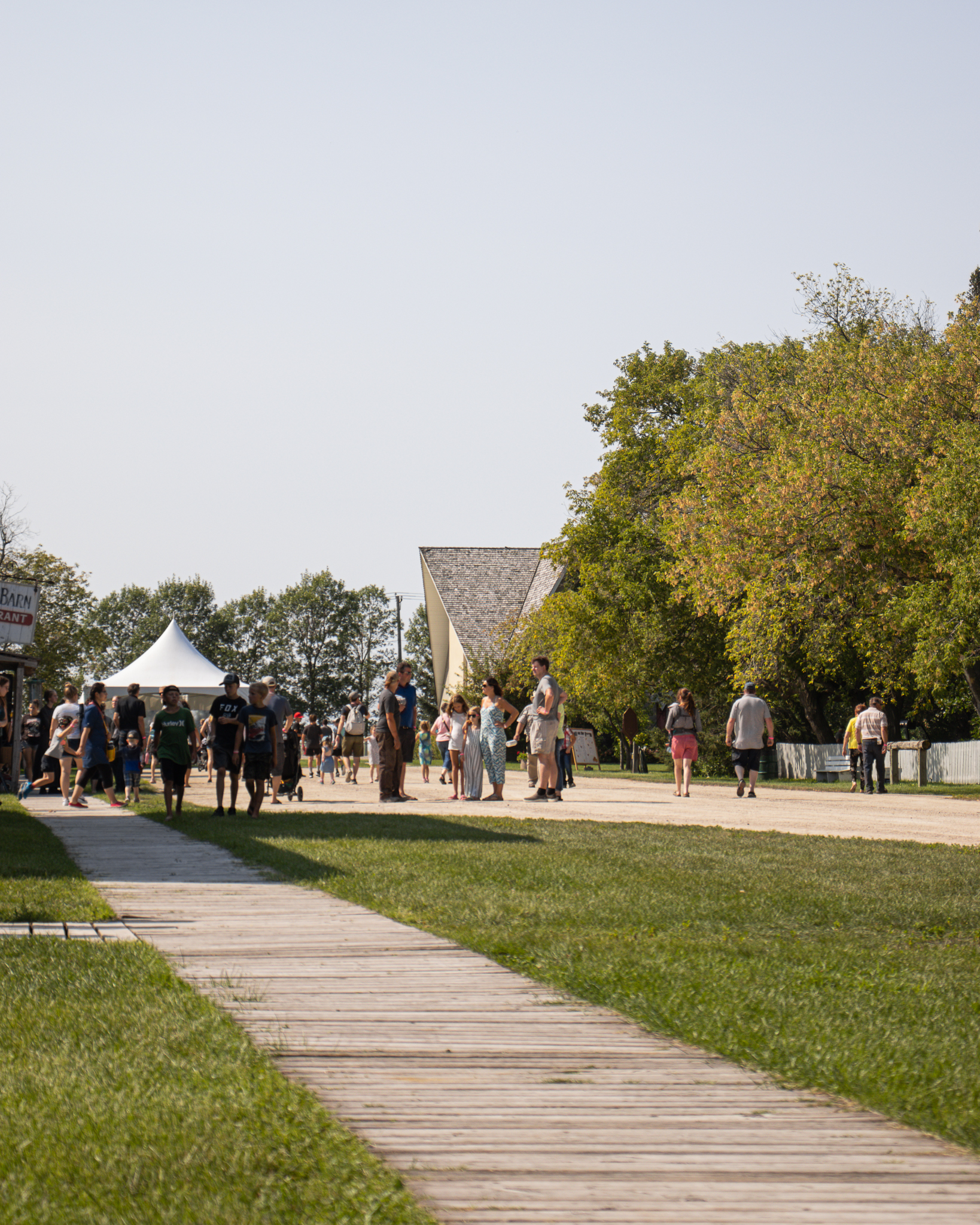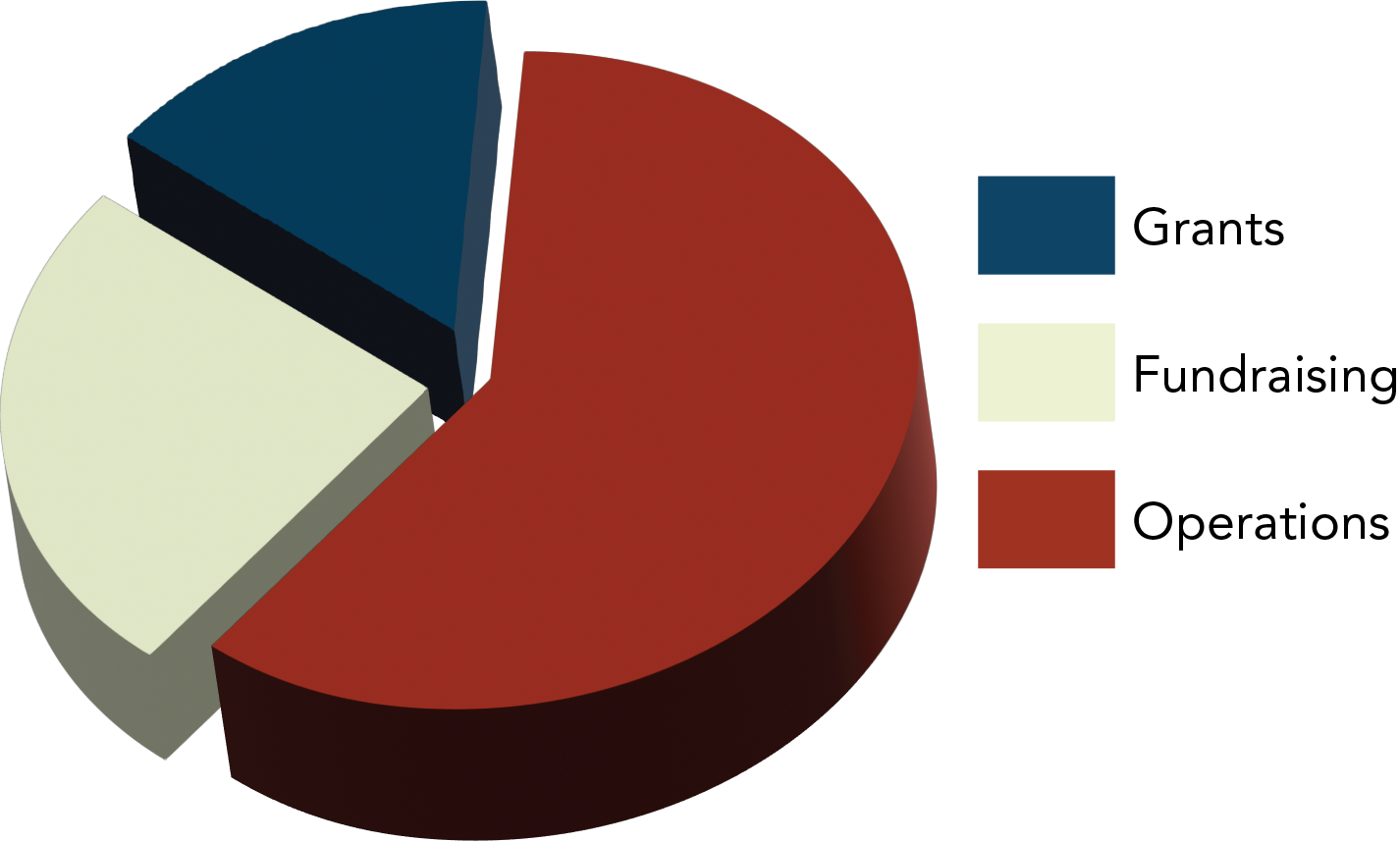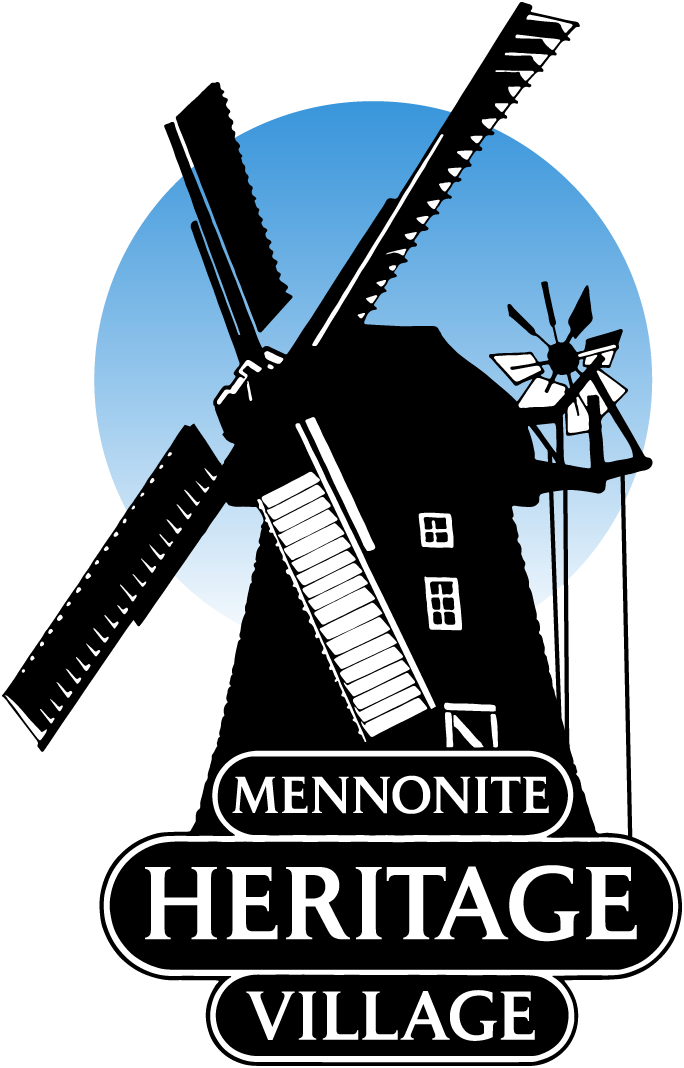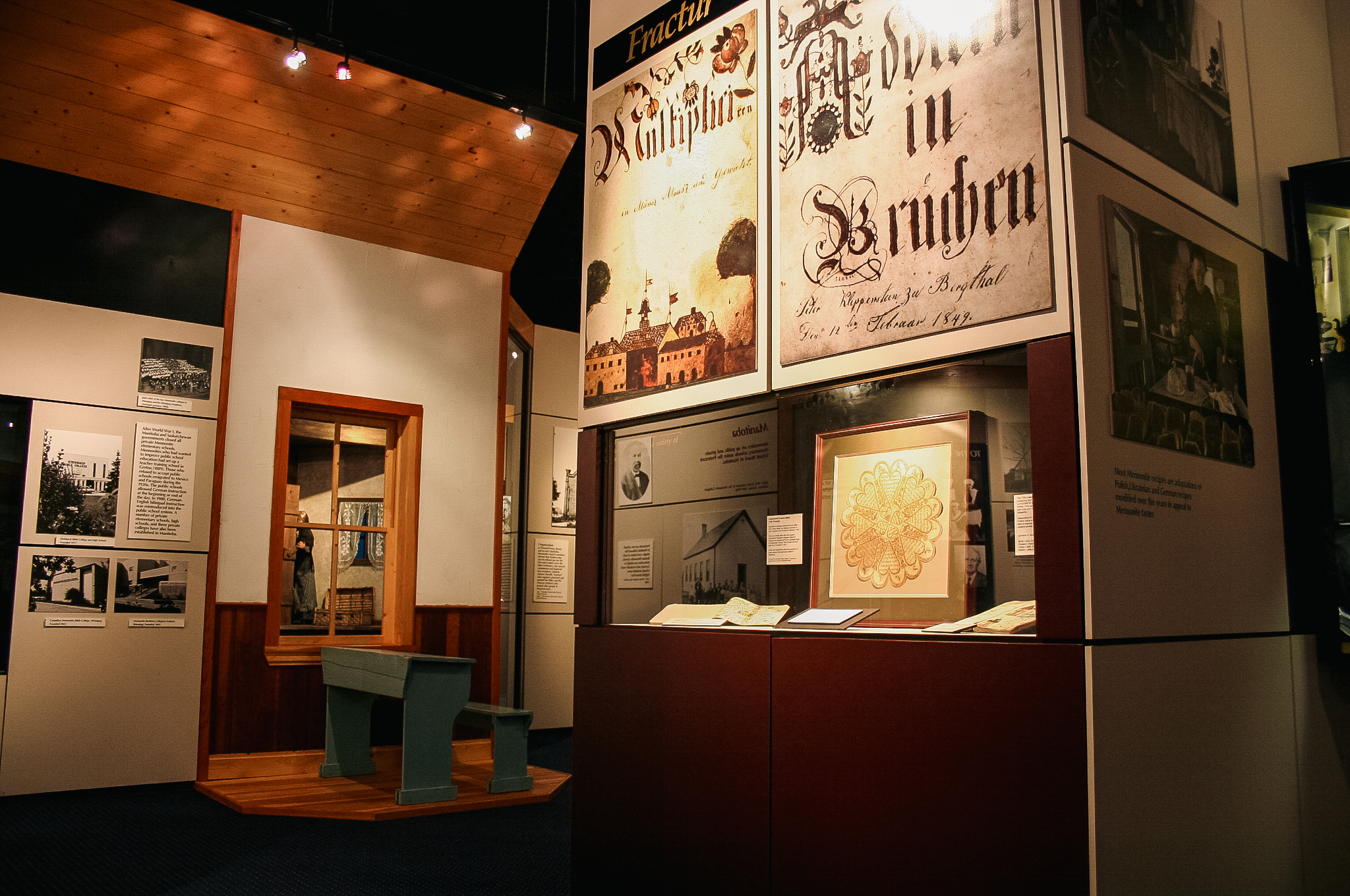About
Hello! Thank you for stopping by our website! Let us share a little about who we are.
Mennonite Heritage Village is a turn-of-the-century Russian Mennonite village. Our 40-acre site includes several heritage buildings, including a classic Mennonite House barn, the Livery Barn Restaurant, indoor galleries, Village Books & Gifts, and the only operational wind-powered flour mill in Canada!
There is always something new to experience, whether it be an exhibit in the Gerhard Ens Gallery, an event day, new artefacts, or live demonstrations.
Mennonite Heritage Village »
Where Our Story Began

MHV has changed significantly since it was incorporated over 50 years ago, in 1964. The progression from ideas and dreams to a functioning museum has been challenging and exciting for those involved.
John C. Reimer (1894-1990) was a teacher and collector of artefacts with a deep love of history and the Mennonite story. For some people, old things worn beyond their use are disposable. For many others, particular objects tell a story, a story about their family, their life, or a meaningful event. As Reimer understood, old things can help teach history. Without understanding our past, we can lose sight of our future and the direction we would like to take as individuals and as a society.
As early as 1934, Reimer began to bring artefacts of historical interest to his classes and, with the aid of his Blumenort school, built a “Semlin” (sod house).
Establishing a Mennonite museum was a plan of Reimer’s since 1949 when a Museum Committee was formed to celebrate the 75th anniversary of the first Mennonite migration to Manitoba. Although this initial attempt to start a museum about Mennonite history stalled, Reimer gathered artefacts from all over southern Manitoba. In 1951, he discovered and purchased his grandfather Klaas R. Reimer’s old store. He moved the store to his property and restored it to its original state. This was Steinbach’s first museum and was opened upon the visitor’s request.
In April 1958, at a meeting of the Mennonitisches Historisches Komitee (Mennonite History Committee), Reimer was elected to a new museum sub-committee. By 1961, 6 acres were purchased in the Steinbach area to build a museum, supported by the local community.
Mennonite Heritage Village was officially incorporated in 1964 and opened its doors to visitors in 1967.
And Then We Grew
By the mid-1980s, the collections and activities of Mennonite Heritage Village had grown so vast that a new complex was required. This challenge allowed the museum and its community to re-imagine what the museum could be. The Board of Directors embarked on an ambitious expansion project to enable the museum to reach its potential. For its first 25 years, the museum operated out of one main building (the Auditorium), which housed the staff offices, collections storage area, and exhibit space.
The new vision for the museum in the 1990s included a brand-new building, the Village Centre. This building would fulfill the museum’s administrative needs, including offices, a museum gift shop, space for social functions, rentals, and food preparation, as well as the expanding artefact collection. New gallery spaces were also built. The Main Gallery was designed to tell the story of Mennonites from the Reformation in the 16th century to Canada in the late 20th century. The Temporary Gallery (later renamed the Gerhard Ens Gallery) was to be a designated space equipped to host new temporary exhibits. This vision for the museum included an increased emphasis on maintaining professional standards of artefact collection care. To that end, the new curatorial facilities in the Village Centre, including a lab, exhibit design room, collections storage spaces, and all the exhibit galleries, were built with integrated environmental controls. This environmental improvement would better protect and preserve the museum’s irreplaceable artefact collection for the future. By 1989, the new Village Centre was opened to the public. Upon the completion of this expansion, the museum was officially renamed ‘Mennonite Heritage Village’.
What’s Next for MHV?
Many things have changed since we opened our doors in the 1960s; however, the importance of being involved with the community of southeastern Manitoba remains true today. The museum relies on its many dedicated volunteers and the service and expertise they bring to their work at the museum, whether they are interpreting for visitors in the heritage buildings in the village, working with students in the school programs, tending the museum grounds, taking care of the museum’s animals over the summer, or helping with food preparation for social functions.
Specialty clubs, like MHV Auxiliary, the Steinbach and Area Garden Club, the Horse Club, the Steam Club, and the Southeast Implements Collections, help make Mennonite Heritage Village an exciting place filled with a variety of attractions.
While the values of MHV remain the same, much has changed since the days of preserving artifacts in a small store. MHV continues to expand and build upon the vision of its founders.

Our Mission
To preserve and exhibit, for present and future generations, the experience and story of the Russian Mennonites and their contributions to Manitoba.
Our Vision
MHV will be the premier interpretive centre for the Russian Mennonite story.
Our Values
- Integrity
- Respect
- Excellence
- Financial Stability
- Environmental Responsibility
- Visitor/Customer Friendly
- Member Owned
- Teamwork
Our Strategic Priorities
MHV is governed by the following values:
- Cultural Stewardship – Our mission as a museum is to collect and preserve artifacts and stories and to use these to teach our guests the significance of the Russian Mennonite History.
- Organizational Sustainability – In order for the organization to flourish today and in the future, we need to be intentional in anticipating the challenges to growth and addressing them proactively.
- Financial Health – Financial health is critical to the organization remaining functional.
How We Operate
Mennonite Heritage Village (Canada) Inc. (MHV) is incorporated in the Province of Manitoba and is owned by approximately 400 members. A board of directors is elected at the organization’s Annual General Meeting and is responsible for oversight of the museum. This board functions as a governance board focusing on the mission, vision, values, strategic priorities, and policies of MHV. The board hires an Executive Director to manage the operations of the museum.
The museum preserves a collection of over 16,000 artefacts and uses them, and the stories associated with them, to interpret the history of the Mennonites who immigrated from Russia to Canada, beginning in 1874. Our programs reach out to our local constituency as well as an international audience focusing on tourism and education. Our festivals and meeting facilities reach out to the local community.
Our operations are funded approximately 60% by our own services, 15% by government grants, and 25% by fundraising initiatives and donations.

Staff

Andrea Klassen
Bio
Andrea is responsible for the museum’s collection of artefacts and for the development of all our exhibits. She brings a rich experience in Mennonite history and curatorial work to MHV. Andrea earned her BA (Hons) in History at the University of Winnipeg and her MA in Mennonite History at the University of Manitoba and University of Winnipeg.

Gary Dyck
Executive Director, B. A. (Hons), M. A.
Bio

Robert Goertzen
Program Manager, B. A.
Bio

Nita Wiebe
Bio

Laurie Wiebe
Bio

Kara Suderman
Bio

Jenny Froese
Bio

Kaelyn Nickel
Bio


